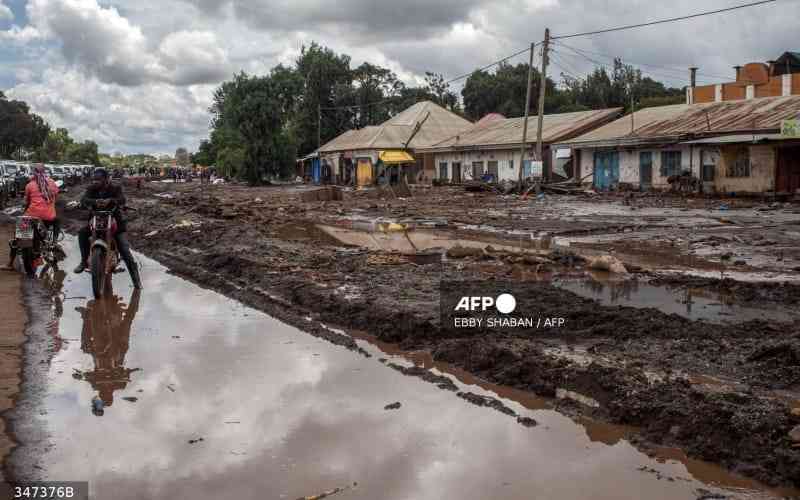Kenya’s Media space is saturated with tales of hunger, high food prices, double figure inflation, escalating unemployment, record layoffs and a looming economic meltdown. Whereas government spares no effort in assuring us that the current enigma is a result of a long drought and is a temporary inconvenience the reality is much more complex. For the last five years government has invested in mega-infrastructure in such an irrational and haphazard manner that it comes as no surprise that the expected dividend and return on the investment is fast evaporating into thin air.
When it comes to food production and security we have obviously not learned much, either from history, or best practices elsewhere. We are in a perpetual business-as-usual mode, faithfully repeating the mistakes of the past and attempting to implement untested policies, and blatantly using models that have failed elsewhere.
Take the subsidized government fertiliser scheme for example. What is its guiding principle? What is the rationale behind it? A subsidy is supposed to enable the farmer to meet a certain production target. An effective subsidy facility subsumes that government has the right data: a number of commercial farmers, the acreage under a specific crop, financial strength of the farming community, existing crop insurance and fallback alternatives in the event of droughts and other acts of God.
As it is government does not seem to differentiate between commercial and subsistence farmers. Commercial farmers have the finances, the machinery and the land to carry out successful farming activities. If the subsidies target commercial farmers then an agreement that binds both government and the farmer to certain obligations and responsibilities must be hammered out. For example, the farmers must meet an agreed production target and must offer their crop at an agreed price to the government. We cannot sustain the kind of demands that we keep hearing being made, for example, by farmers in the North Rift: They want a subsidy but also want to dictate the price of maize. You can’t have your cake and eat it!
If the subsidy targets subsistence farmers then let be said so in a policy framework. Obviously, government cannot expect to gain much from such farmers in the form of food reserve. It would be more of a social investment: allow the subsistence farmers feed themselves and sell the small surplus on the open market for a little money to meet their domestic needs. Of course, government must then exercise due diligence to ensure such fertiliser does not end up in the hands of middlemen, criminals, and the usual scammers.
In either case, the subsidy must be extended to all crops, not just maize and wheat. At the same time, care must be taken not to upset existing arrangements made by federations and farming organizations such as the Kenya Tea Development Authority, the Coffee Board etc. These organizations have built up a scheme that provides for timely supply of farming inputs that assures the availability of the highest possible quality at the place and instant it is needed. It will not augur well for tea and coffee sector to join the nascent and still chaotic subsidy scheme.
Meanwhile dedicated commercial farmers must aggressively optimise their activities and market their produce in the open market and wean themselves from government handouts. In a true democratic capitalist economy government has no business entangling itself in the day to day goings on at farms and food processing plants. The government provides an enabling environment in the form of professional support, policy implementation, and removal of trade obstacles.
The government should not be tempted to go down into the farmlands and attempt to ‘compete’ with the farming community. Past governments both here in Kenya and all over the world have tried this and have failed miserably. Look at all those irrigation schemes (many started when Kenya was a Colony) that were supposed to make Kenya self-sufficient in Cotton, Rice, Sugar Cane etc. They have all failed without exception.
I am sure many Kenyans under the age of 50 have never heard of Perkerra, Bura, Wei Wei, Kano, (these were once supposed to be great irrigation schemes). Nor do I think they know what a Ginnery is. It is not a factory for making Gin (alcohol) but is a machine that separates cotton fiber (for making clothing materials!) from cotton seed. Cotton seed is pressed for oil and what remains is cotton cake that is fed to cattle, pigs, chickens and fish. These ginneries were all over Kenya including some places many have never heard of, such as Nambale and Butula!
Farms thrive in the hands of ordinary citizens and the private sector, not the government. Look at tea, coffee, horticulture or floriculture. Better still compare Kibos Sugar (private) and its next door neighbour Chemelil. When is the last time you bought a packet of ‘Chemelil Sugar’ in Mombasa? Or Ahero Rice (government) and Mwea Rice. Ever heard of ‘Sindano’? Well, it is a rice cultivar grown in Ahero-it probably has never made it into any supermarket in Kisumu let alone Nairobi!
 The Standard Group Plc is a
multi-media organization with investments in media platforms spanning newspaper
print operations, television, radio broadcasting, digital and online services. The
Standard Group is recognized as a leading multi-media house in Kenya with a key
influence in matters of national and international interest.
The Standard Group Plc is a
multi-media organization with investments in media platforms spanning newspaper
print operations, television, radio broadcasting, digital and online services. The
Standard Group is recognized as a leading multi-media house in Kenya with a key
influence in matters of national and international interest.
 The Standard Group Plc is a
multi-media organization with investments in media platforms spanning newspaper
print operations, television, radio broadcasting, digital and online services. The
Standard Group is recognized as a leading multi-media house in Kenya with a key
influence in matters of national and international interest.
The Standard Group Plc is a
multi-media organization with investments in media platforms spanning newspaper
print operations, television, radio broadcasting, digital and online services. The
Standard Group is recognized as a leading multi-media house in Kenya with a key
influence in matters of national and international interest.








